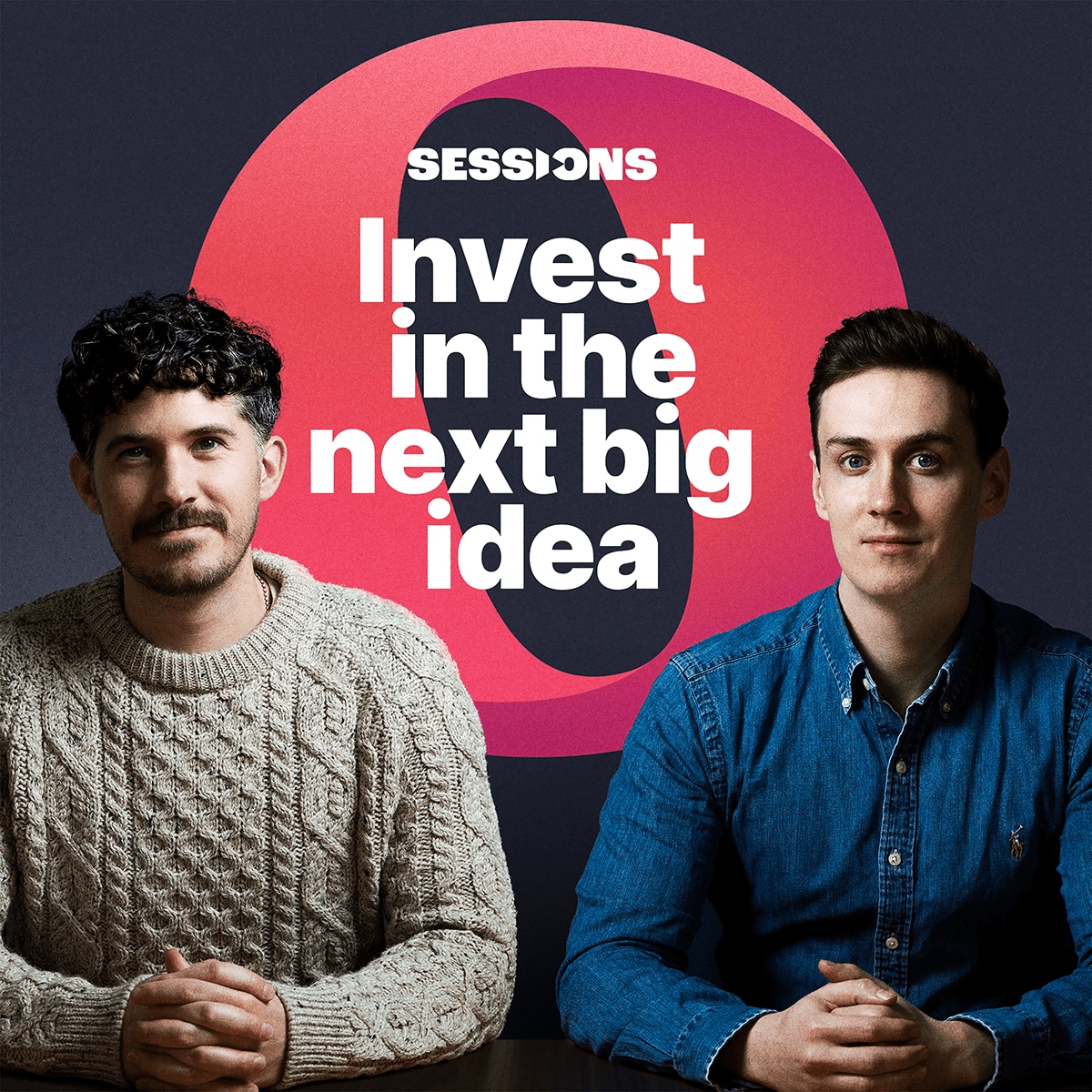Yuri Khodjamirian, Chief Investment Officer at Tema ETFs, joins OPTO Sessions this week to discuss the biotech space and highlight its market outperformance. Regulatory certainty and active management are crucial, he explains, and ETFs in the sector offer exposure to high-growth markets driven by breakthrough innovations.
Yuri Khodjamirian is the Chief Investment Officer at Tema ETFs. Previously he spent over a decade at Majedie Asset Management managing the firm’s UK and global portfolios. He helped build the firm’s UK Income Fund from the start-up stage to holding several billion pounds in assets. He also started his own long-only fund focused on business transitions and advises start-ups in the financial and biotechnology sectors.
He earned his bachelor’s degree in economics from the University of Cambridge, as well as two master’s degrees: one in economics from the London School of Economics and Political Science and bioscience enterprise from the University of Cambridge.
Drivers of Performance
Biotech has significantly outperformed the market over the long term, with the Nasdaq Biotechnology Index beating the S&P 500 by 467% over the last 25 years, according to a white paper from Tema.
“A lot of people forget how powerful the biotech sector has been as a source of return for investors,” Khodjamirian says on this week’s episode of OPTO Sessions. “It’s even outperformed the technology sector, which is seen as the big winner of the last 20 years. There are several drivers, the biggest of which is innovation.”
He points to the fact that in the 2000s, it cost $100m to sequence the human genome — an activity that now costs approximately $1,000: “That sort of innovation is driving all kinds of improvements in terms of how we understand how biology works and how medicines interact with the human body. That’s led to a burst of innovation of new drugs, which we’ve seen in the approvals data over this period.”
He also attributes the growth to the fact that richer societies are spending more to increase life expectancy and regulatory changes to speed up approvals and help the industry get medications to patients faster.
In 2023 the US Food and Drug Association (FDA) approved 55 new medications, five of which were gene therapies, including the first CRISPR gene editing therapy for patients with sickle cell disease.
“That’s really telling as to the level of innovation that’s going on in the sector,” says Khodjamirian. “Part of the drive here has been new types of designation and approval channels. The FDA has said, ‘Okay, we’re going to try to get these medicines to patients as long as they meet the clinical trial threshold, and we are also going to work closely with industry to understand how to design clinical trials to get approved.’ That’s been a big change over the past decade.”
Ageing and Personalisation
The number of individuals over the age of 60 is set to reach over 2 billion by 2050, according to the UN, a factor that will be reflected in healthcare spending, especially in terms of oncology and treatment for Alzheimer’s and neurological disorders.
“As people age, they unfortunately acquire diseases,” says Khodjamirian. “But can we have medicines that modify these diseases so that people can live longer and have a better quality of life? This is a really powerful trend,” especially as older people tend to have more spending power.
In addition to ageing, personalised medicine is driving growth. “We’ve now got, ever since the approval of the first disease-modifying drug in Alzheimer’s, a treatment of every disease group. The next stage is to say, ‘Okay, now that I can treat this disease group, can I come up with medicines that might work better for a specific patient population?’”
Now that it is cheaper to sequence the human genome, these genetic signals can be used to figure out how well medicines will work and discover more use cases for different types of medicines depending on the individual.
Improvements in diagnostics and genetics have helped develop a greater understanding of how the latter interact with protein production in the body. “We can use all of this data. This feeds into artificial intelligence as a tool to personalise medication, or at least find drugs that fit a particular patient’s subgroup.”
Active Management Approach
There’s a lot of discussion about dispersions of returns in the biotech sector, even over a two- or three-year horizon. There are a lot of winners, but many companies fail entirely. This disparity does not suit a passive investment approach, yet many exchange-traded funds (ETFs) in this space are passive.
For example, in the obesity space there are around 400 assets targeting a few goals, says Khodjamirian. Given the low success rate — only around 15% of cardiometabolic drugs make it to approval — expertise is crucial.
“It’s important to have an active manager. The funds we’ve got are managed by someone who has spent 25 years, basically, in the industry, but also investing in the market, and has a fantastic track record of looking at the space,” he says. “That’s what you really need to combat these risks, manage them and get exposure to growth areas. Obesity is a perfect example of that.”
Ethical Considerations
“Life science funds are really positive from an environmental, social and governance perspective; you’re already investing in helping human life and patients,” explains Khodjamirian. “And that’s what we’re really trying to do with these funds.”
The focus is on innovative companies driving breakthrough innovations for patients; while some tools like gene editing and stem cell research can be controversial, ensuring that portfolio companies adhere to regulations mitigates existential risks.
It is also important to emphasise safe production practices. “Within our security selection process, as part of our risk criteria, we ensure that these companies aren’t using any kind of bad method during production, manufacturing or discovery that could be seen as unethical,” he says.
“Life science funds are really positive from an environmental, social and governance perspective; you’re already investing in helping human life and patients”
As the US heads into a close election season, the markets are looking for certainty in terms of regulations. “The one thing about stock market investing in general — not just healthcare — is that the market likes certainty. It almost doesn’t matter if it’s bad news…it’s clarity. We know what the situation is.
“We think that if the status quo continues, probably the sector will be fine through this election period,” he says.
Ways to Invest
Tema ETFs has three ETFs in the space: Tema Oncology ETF [CANC], Tema Obesity and Cardiometabolic ETF [HRTS], and the Tema Neuroscience and Mental Health ETF [MNTL].
“Investing in a broader biotech or healthcare sector fund probably exposes you to passive investment,” Khodjamirian says. By looking at sectors through therapeutic areas, investors exclude intermediaries and areas less pertinent to the space and allow for “adjacency and then get exposure to exciting bits of innovation”.
“We’ve decided to dissect by these therapeutic areas to get exposure to large growth markets but also these adjacent parts,” he says. “We think it is probably the first time you can actually do that.”
As of 23 May, CANC is up 652.1% since its launch in August 2023 and 4% year-to-date. HRTS is up 21.1% since its launch in November 2023, and 6.4% year-to-date. MNTL is down 0.5% since its launch in January.
Disclaimer Past performance is not a reliable indicator of future results.
CMC Markets is an execution-only service provider. The material (whether or not it states any opinions) is for general information purposes only, and does not take into account your personal circumstances or objectives. Nothing in this material is (or should be considered to be) financial, investment or other advice on which reliance should be placed. No opinion given in the material constitutes a recommendation by CMC Markets or the author that any particular investment, security, transaction or investment strategy is suitable for any specific person.
The material has not been prepared in accordance with legal requirements designed to promote the independence of investment research. Although we are not specifically prevented from dealing before providing this material, we do not seek to take advantage of the material prior to its dissemination.
CMC Markets does not endorse or offer opinion on the trading strategies used by the author. Their trading strategies do not guarantee any return and CMC Markets shall not be held responsible for any loss that you may incur, either directly or indirectly, arising from any investment based on any information contained herein.
*Tax treatment depends on individual circumstances and can change or may differ in a jurisdiction other than the UK.
Continue reading for FREE
- Includes free newsletter updates, unsubscribe anytime. Privacy policy


